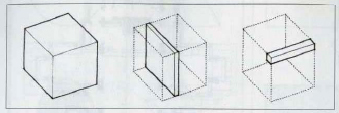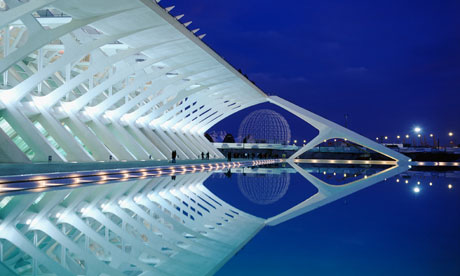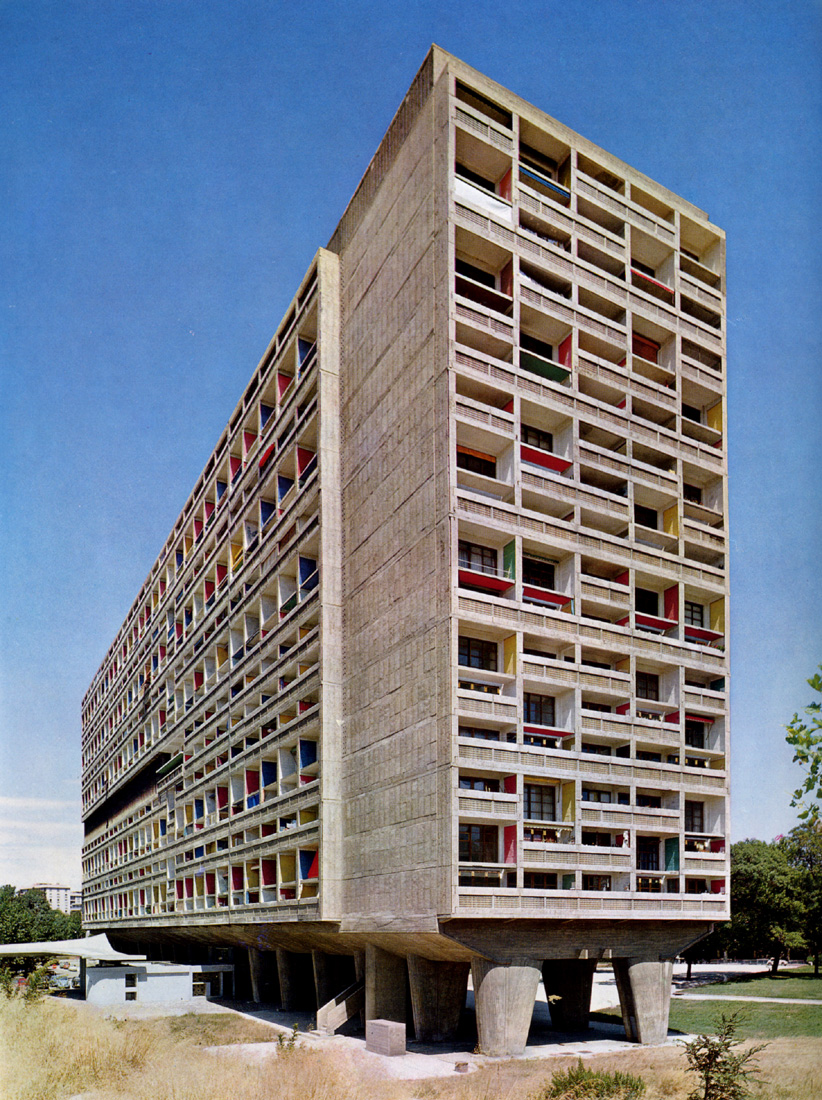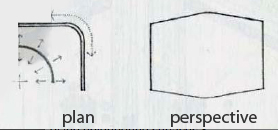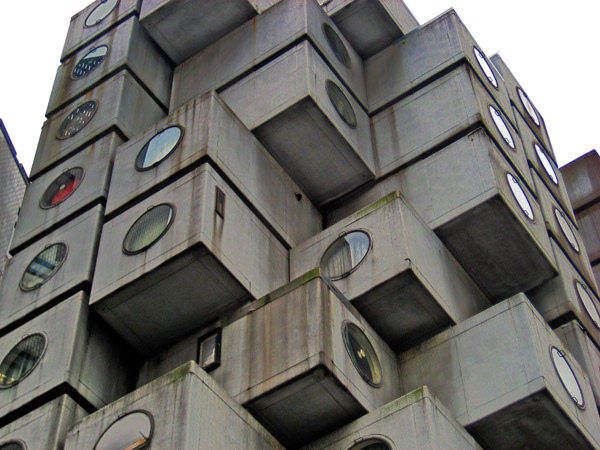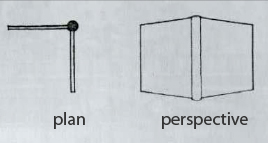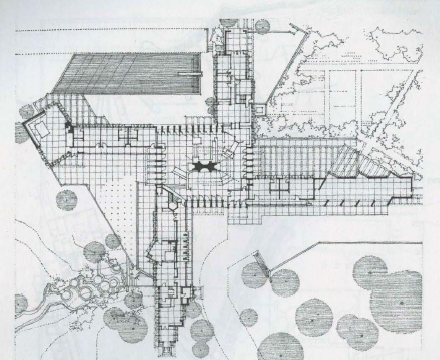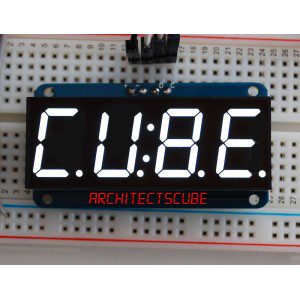Quiz On A Theory Of Architecture Book
-
What type of form transformation in the figure shown above?
-
Dimensional transformation
-
Subtractive transformation
-
Additive transformation
-
None
-
Subject: THEORY of ARCHITECTURE
Answer the questions with the given choices. The entire questions are composed of basic and board exam type questions. Answer the questions sincerely with the time alloted. The main objective of the quiz is to let the examinees have the feel of answering questions while time pressured.
Note:
If you like to be notified for the updated questions See moreand board exam events,
add as on facebook: [email protected]/* */
If you have questions, feedback and suggestions regarding the quiz, email us at [email protected]/* */
Alternatively, you can share your feedback at archiTALK corner for your profesional insights and questions.

Quiz Preview
- 2.
What type of form transformation in the figure shown above?
-
Dimensional transformation
-
Subtractive transformation
-
Additive transformation
-
None
Correct Answer
A. Subtractive transformationExplanation
NOTE: A form can be transformed by subtracting a portion of its volume. Depending on the extent of the subtractive process, the form can retain its initial identity or be transformed into a form of another family. For example, a cube can retain its identity as a cube even thought a portion of it is removed, or be transformed into a series of regular polyhedrons that begin to approximate sphere.Rate this question:
-
- 3.
A polyhedron having a polygonal base and triangular faces meeting at a common point or vertex?
-
Pyramid
-
Polygon
-
Cone
-
Hexagon
Correct Answer
A. PyramidExplanation
A polyhedron with a polygonal base and triangular faces meeting at a common point or vertex is called a pyramid. In a pyramid, the base can be any polygon, and the triangular faces connect the vertices of the base to the apex. This structure resembles the shape of a pyramid, hence the name. A cone is also a polyhedron with a circular base, but its faces are not triangular. A hexagon is a polygon, but it does not meet the criteria of having triangular faces meeting at a common vertex.Rate this question:
-
- 4.
An inclined line that rotates 360 degree having one end tip as a base of rotation?
-
Pyramid
-
Cone
-
Inclined cylinder
-
Plane
Correct Answer
A. ConeExplanation
A cone is a three-dimensional shape that has a circular base and a pointed top. In this question, it is described as an inclined line that rotates 360 degrees, with one end tip acting as the base of rotation. This perfectly matches the characteristics of a cone, as it has a circular base and when rotated, it covers a full 360-degree rotation.Rate this question:
-
- 5.
The figure above was design by Adrea Palladio, identify which transformation of form it belongs?
-
Dimensional transformation
-
Subtractive transformation
-
Additive transformation
-
None
Correct Answer
A. Additive transformationExplanation
The figure designed by Adrea Palladio belongs to the additive transformation because it involves adding or combining different elements or forms to create the final design. This can be seen in the figure where multiple architectural elements are combined to form a cohesive structure.Rate this question:
-
- 6.
Which of the illustration above defines "space within a space"?
-
A
-
B
-
C
-
D
Correct Answer
A. A -
- 7.
A phenomenon of light and visual perception that may be described in terms of an individual's perception of hue, saturation and tone value. It distinguish a form from its environment?
-
Texture
-
Disaturation of surface
-
Color
-
Daylight
Correct Answer
A. ColorExplanation
Color is the correct answer because it refers to the phenomenon of light and visual perception that involves an individual's perception of hue, saturation, and tone value. Color allows us to distinguish a form from its environment by providing visual cues that help us identify and differentiate objects based on their distinct hues and shades. By perceiving color, we can perceive depth, contrast, and various visual details that aid in our understanding and interpretation of the world around us.Rate this question:
-
- 8.
Identify which transformation of form is applied to the photo above?
-
Dimensional transformation
-
Subtractive transformation
-
Additive transformation
-
None
Correct Answer
A. Subtractive transformationExplanation
The correct answer is subtractive transformation. This is because the photo appears to have undergone a process of removing or subtracting elements or colors from the original image. This can be seen by the absence of certain details or colors in the photo, suggesting that something has been taken away or subtracted.Rate this question:
-
- 9.
House at Stabio by Mario Botta, Identify which transformation of form is applied?
-
Dimensional transformation
-
Subtractive transformation
-
Additive transformation
-
None
Correct Answer
A. Subtractive transformationExplanation
The correct answer is subtractive transformation. In the House at Stabio by Mario Botta, a subtractive transformation is applied. This means that the form of the house is created by removing or subtracting material, rather than adding or building up material. This can be seen in the design of the house, where certain portions appear to be carved out or removed to create different shapes and volumes.Rate this question:
-
- 10.
The characteristic outline outline or surface configuration of a particular form and the principal aspect by which we identify form?
-
Texture
-
Form
-
Shape
-
Size
Correct Answer
A. ShapeExplanation
The characteristic outline or surface configuration of a particular form refers to its shape. Shape is the principal aspect by which we identify different forms. Texture refers to the feel or appearance of a surface, form refers to the physical structure or arrangement of an object, and size refers to the dimensions or measurements of an object. However, in this context, the focus is on the outline or configuration, which is best represented by the concept of shape.Rate this question:
-
- 11.
The principle of organization can be altered through a series of discrete manipulations and permutation without loss of identity or concept?
-
Axis
-
Symmetry
-
Hierarchy
-
Rhythm
-
Datum
-
Transformation
Correct Answer
A. TransformationExplanation
The principle of organization can be altered through a series of discrete manipulations and permutation without loss of identity or concept. This implies that the organization can be changed or transformed while still maintaining its essence and meaning. Transformation refers to the process of changing or modifying something, and in this context, it refers to the ability to alter the principle of organization without losing its identity or concept. Therefore, transformation is the correct answer.Rate this question:
-
- 12.
A prismatic solid bounded by "six" equal square sides, the angle between any two adjacent faces being at right angle?
-
Cube
-
Unrecognizable form
-
Square
-
Hexagon
Correct Answer
A. CubeExplanation
A cube is a prismatic solid bounded by six equal square sides, with the angle between any two adjacent faces being at a right angle.Rate this question:
-
- 13.
The figure above was design by Le Corbusier, identify which transformation of form it belongs?
-
Dimensional transformation
-
Subtractive transformation
-
Additive transformation
-
None
Correct Answer
A. Subtractive transformationExplanation
This figure designed by Le Corbusier belongs to the subtractive transformation. This is because the figure appears to have been created by removing or subtracting material from a solid block or mass, resulting in the final form.Rate this question:
-
- 14.
A rectangle whose sides are proportioned according to the golden section is known as?
-
Golden rectangle
-
Fibonacci rectangle
-
Modulor scale
-
Pythagorean rectangle
Correct Answer
A. Golden rectangleExplanation
A rectangle whose sides are proportioned according to the golden section is known as a golden rectangle. The golden section, also known as the golden ratio, is a mathematical ratio of approximately 1.618. In a golden rectangle, the ratio of the length to the width is equal to the golden ratio. This proportion is aesthetically pleasing and has been used in art and architecture for centuries. The other options, such as fibonacci rectangle, modulor scale, and pythagorean rectangle, do not specifically refer to rectangles with sides proportioned according to the golden section.Rate this question:
-
- 15.
A unifying movement characterized by patterned repetition or alteration or formal elements or motifs in the same or modified form?
-
Axis
-
Symmetry
-
Hierarchy
-
Rhythm
-
Datum
-
Transformation
Correct Answer
A. RhythmExplanation
Rhythm refers to a unifying movement characterized by patterned repetition or alteration of formal elements or motifs in the same or modified form. It is a concept often used in various art forms, such as music, dance, and visual arts, to create a sense of flow, continuity, and harmony. Rhythm can be achieved through the repetition of shapes, colors, lines, or other visual elements, creating a sense of movement and visual interest. It helps to create a cohesive and unified composition, making it an important element in the design and organization of visual arts.Rate this question:
-
- 16.
Indicate a position in a space?
-
Line
-
Plane
-
Volume
-
Point
Correct Answer
A. PointExplanation
A point is the most basic element in geometry that indicates a specific position in space. Unlike a line, plane, or volume, a point has no dimensions and does not extend in any direction. It is simply a location represented by a single coordinate. Therefore, when asked to indicate a position in space, the correct answer would be a point.Rate this question:
-
- 17.
A line extended in a direction other than its intrinsic direction?
-
Line
-
Plane
-
Volume
-
Point
Correct Answer
A. PlaneExplanation
A plane is a two-dimensional surface that extends infinitely in all directions. Unlike a line, which has only one dimension and extends in a specific direction, a plane can extend in any direction other than its intrinsic direction. Therefore, a plane is the correct answer for a line extended in a direction other than its intrinsic direction.Rate this question:
-
- 18.
Identify the illustration above?
-
Human Anthropometric
-
The "Modulor" : A harmonious Measure to the human Scale
-
Lucas Series of Proportion
-
Aquarium Gay Bar
Correct Answer
A. The "Modulor" : A harmonious Measure to the human ScaleExplanation
The correct answer is "The "Modulor" : A harmonious Measure to the human Scale". The illustration above is likely a representation of Le Corbusier's "Modulor" system, which was a scale of proportions based on the human body. This system was developed to create harmonious and balanced designs that were in line with human proportions.Rate this question:
-
- 19.
Under additive composition, what type of form composition is "The 1 Mile High Illinois by FLW?
-
Linear form
-
Radial form
-
Grid form
-
Clustered
Correct Answer
A. Linear formExplanation
The 1 Mile High Illinois by FLW is an example of linear form composition. Linear form composition refers to a composition that is characterized by long, straight lines and a sense of horizontal or vertical movement. In the case of The 1 Mile High Illinois, the design features a tall, slender tower that rises vertically, emphasizing the linear nature of the composition.Rate this question:
-
- 20.
The balanced distribution and arrangement of equivalent forms and spaces on opposite sides of a dividing line or plane or about a center axis?
-
Axis
-
Symmetry
-
Hierarchy
-
Rythm
-
Datum
-
Transformation
Correct Answer
A. SymmetryExplanation
Symmetry refers to the balanced distribution and arrangement of equivalent forms and spaces on opposite sides of a dividing line or plane or about a center axis. It is the concept of having mirror-like reflection or repetition of patterns, shapes, or structures. In this context, symmetry perfectly aligns with the description provided, making it the correct answer.Rate this question:
-
- 21.
Illustration above is a Housing Development. Identify the type of spatial organization?
-
Centralized organization
-
Radial organization
-
Grid organization
-
Linear organization
Correct Answer
A. Linear organizationExplanation
The spatial organization in the illustration is a linear organization. This can be inferred from the arrangement of the houses in a straight line or along a single axis. The houses are not arranged in a centralized, radial, or grid pattern, but rather in a linear manner.Rate this question:
-
- 22.
The figure above is a simple explanation of what space organization?
-
Datum
-
Transformation
Correct Answer
A. TransformationExplanation
The figure above represents a simple explanation of transformation in space organization. Transformation refers to the process of changing or converting one form or state to another. In the context of space organization, it could refer to the reconfiguration or rearrangement of physical spaces to better suit the needs or objectives of an organization. This could involve changes in layout, design, or functionality to optimize space utilization and improve workflow.Rate this question:
-
- 23.
It is the primary identifying characteristic of a volume? Established by the shapes and interrelationships of the planes that describes the boundaries of the volume?
-
Texture
-
Form
-
Surface
-
Mass
Correct Answer
A. FormExplanation
Form refers to the overall shape and structure of an object or volume. It is the primary identifying characteristic of a volume because it is determined by the shapes and interrelationships of the planes that describe the boundaries of the volume. Texture refers to the surface quality of an object, surface refers to the outermost layer of an object, and mass refers to the physical weight or density of an object. None of these characteristics specifically relate to the primary identifying characteristic of a volume.Rate this question:
-
- 24.
All other forms can be understood to be a transformation of the primary solids, variations which are generated by the manipulation of one or more dimension or by the addition or subtraction of elements What type of form transformation in the figure shown above?
-
Dimensional transformation
-
Subtractive transformation
-
Additive transformation
-
None
Correct Answer
A. Dimensional transformationExplanation
NOTE: A form can be transformed by altering one or more of its dimension and still
retain it's identity as a member of a family of forms. A cube, for example, can be transformed into similar prismatic forms through a discrete changes in height, width or length. It can be compressed into a planer form or be stretched out into a linear one.Rate this question:
-
- 25.
The St. Peter in Rome, " first version" by Donato Bramante is what type of spatial organization?
-
Centralized organization x
-
Clustered organization
-
Grid organization
-
Radial organization
Correct Answer
A. Centralized organization xExplanation
The St. Peter in Rome, "first version" by Donato Bramante is an example of a centralized organization. This means that the space is organized around a central point or axis, with elements radiating out from that central point. In the case of St. Peter's, the central point is the dome, which is surrounded by a symmetrical arrangement of chapels, columns, and other architectural features. This type of spatial organization creates a sense of balance and harmony, with all elements focused on the central point.Rate this question:
-
- 26.
What architectural line is prominent in Prarie house designed by Frank Lloyd Wright?
-
Massiveness
-
Vertical
-
Horizontal
-
Combination of vertical and horizontal line
Correct Answer
A. HorizontalExplanation
The correct answer is horizontal because in Prairie house designs by Frank Lloyd Wright, horizontal lines are a prominent architectural feature. This can be seen in the low, flat roofs, long horizontal bands of windows, and the overall emphasis on horizontal proportions. The horizontal lines help to create a sense of harmony and connection with the surrounding landscape, which is a key aspect of Wright's design philosophy.Rate this question:
-
- 27.
City of Arts and Sciences design by Santiago Calatrava and Felix Candela. An entertainment-based cultural and architectural complex in the city of Valencia, Spain. It is the most important modern tourist destination in the city of Valencia. What space organization or articulation did Santiago Calatrava and Felix Candela emphasized?
-
Repetition
-
Transformation
-
Rhythm
-
Datum
Correct Answer
A. RepetitionExplanation
Santiago Calatrava and Felix Candela emphasized repetition in the design of the City of Arts and Sciences. This can be seen in the repeated use of certain architectural elements or motifs throughout the complex. Repetition creates a sense of unity and coherence, and can also help to establish a visual rhythm or pattern. In the case of the City of Arts and Sciences, repetition may have been used to create a harmonious and cohesive design that ties the various buildings and spaces together.Rate this question:
-
- 28.
The figure above was design by Le Corbusier, identify which transformation of form it belongs?
-
Dimensional transformation
-
Subtractive transformation
-
Additive transformation
-
None
Correct Answer
A. Dimensional transformationExplanation
The figure designed by Le Corbusier belongs to dimensional transformation because it involves changing the dimensions or proportions of the form. This can be seen in the figure's elongated and stretched appearance, which indicates a transformation in its dimensions.Rate this question:
-
- 29.
A state of utter disorder or confusion?
-
Juxtaposition
-
Chaos
-
Anomaly
-
Contradiction
Correct Answer
A. ChaosExplanation
The term "chaos" refers to a state of complete disorder or confusion. It implies a lack of organization or control, where things are in a state of turmoil or disarray. The other options, juxtaposition, anomaly, and contradiction, do not convey the same sense of disorder and confusion as chaos does.Rate this question:
-
- 30.
Illustration above is a plan and perspective view of the corner wall. Identify the correct effect that are introduced and emphasized for each of the articulation/ configuration?
-
Rounded corner emphasized the softness of its contour and ideally the scale of the curvature must be minimized
-
Rounding the corner emphasizes the continuity of the building surfaces and volume compactness
-
Rounded corner must affect the exterior form but must not affect the interior space it encloses
-
None
Correct Answer
A. Rounding the corner emphasizes the continuity of the building surfaces and volume compactnessExplanation
The correct answer explains that rounding the corner emphasizes the continuity of the building surfaces and volume compactness. This means that by rounding the corner, the building's surfaces flow smoothly and seamlessly, creating a sense of unity and compactness in its overall design.Rate this question:
-
- 31.
Which of the following is NOT the Le Corbusier's 5 points of Architecture?
-
Pilotis
-
Free facade
-
Open floor plan
-
Open garden
Correct Answer
A. Open gardenExplanation
The open garden is not one of Le Corbusier's 5 points of Architecture. Le Corbusier's principles include the use of pilotis (elevated supports), a free facade (non-load-bearing walls), an open floor plan, horizontal windows, and a roof garden. The open garden is not mentioned in his 5 points, making it the correct answer.Rate this question:
-
- 32.
Which is NOT a "fibonacci series number" from 1-114?
-
2
-
15
-
21
-
34
Correct Answer
A. 15Explanation
The Fibonacci series is a sequence of numbers where each number is the sum of the two preceding ones. In this case, the numbers given are 2, 15, 21, and 34. To determine which number is not a Fibonacci series number, we can check if each number is the sum of the two preceding ones. Starting with 2, we see that it is the sum of 1 and 1, making it a Fibonacci number. Moving on to 15, it is not the sum of the two preceding numbers (8 and 13), so it is not a Fibonacci number. Therefore, the correct answer is 15.Rate this question:
-
- 33.
Pyconstyle should be spaced at?
-
1.5D x
-
3D
-
4D
-
2.5 D
Correct Answer
A. 1.5D xExplanation
The correct answer is 1.5D x. Pyconstyle should be spaced at 1.5 times the diameter of the pipe (D). This spacing is necessary to ensure proper insulation and prevent heat transfer.Rate this question:
-
- 34.
The "Golden Section" is equal to?
-
0.816
-
.618
-
1.86
-
0.186
Correct Answer
A. .618Explanation
The "Golden Section" refers to the mathematical ratio known as the golden ratio, which is approximately equal to 0.618. This ratio is often found in nature, art, and architecture and is considered aesthetically pleasing. It is derived by dividing a line into two parts such that the ratio of the whole line to the longer part is equal to the ratio of the longer part to the shorter part.Rate this question:
-
- 35.
The figure above is an explanation of what space of organization?
-
Datum
-
Transformation
Correct Answer
A. DatumExplanation
The figure above represents the concept of Datum in the space of organization. A Datum is a reference point or coordinate system that is used to establish and define the position, orientation, and relationships of objects within an organization. It provides a common frame of reference for communication and decision-making, allowing for consistency and accuracy in data interpretation and analysis. The figure likely illustrates how different elements within the organization are aligned and interconnected based on the established Datum.Rate this question:
-
- 36.
The balanced distribution and arrangement of equivalent forms and spaces on opposite sides of a dividing line or plane or about a center axis?
-
Axis
-
Symmetry
-
Hierarchy
-
Rythm
-
Datum
-
Transformation
Correct Answer
A. SymmetryExplanation
Symmetry refers to the balanced distribution and arrangement of equivalent forms and spaces on opposite sides of a dividing line or plane or about a center axis. It is the property of an object or a design that allows it to be divided into two or more identical or nearly identical parts. Symmetry brings a sense of harmony and balance to a composition, making it visually pleasing and aesthetically appealing.Rate this question:
-
- 37.
Nakagin House by Kisho Kurokawa, identify what type of form composition?
-
Linear form
-
Radial form
-
Grid form
-
Cluster form
Correct Answer
A. Grid formExplanation
The Nakagin House by Kisho Kurokawa is identified as having a grid form composition. This means that the design of the house is organized and structured using a grid-like pattern. The building is likely to have a clear and geometric arrangement of elements, with straight lines and right angles forming the overall layout. The grid form composition provides a sense of order and balance to the design of the Nakagin House.Rate this question:
-
- 38.
Hagia Sophia of constantinople ( Istanbul) is what type of spatial organization?
-
Centralized organization
-
Clustered organization
-
Grid organization
-
Radial organization
Correct Answer
A. Centralized organizationExplanation
Hagia Sophia of Constantinople (Istanbul) is classified as a centralized organization. This is because the architectural design and layout of the building revolve around a central point or axis. The main focus of the structure is the central dome, which is surrounded by smaller domes and semi-domes. The interior space is organized symmetrically around this central point, creating a sense of balance and harmony. Additionally, the main entrance and other important features are aligned with the central axis, further emphasizing the centralized nature of the spatial organization.Rate this question:
-
- 39.
The physical dimension of length, width and depth of a form. It's scale is relative to its other form in its context?
-
Proportion
-
Size
-
Shape
-
Mass
Correct Answer
A. SizeExplanation
Size refers to the physical dimensions of length, width, and depth of a form. It is a relative scale compared to other forms in its context. In other words, size is the measurement or magnitude of an object or form in relation to its surroundings.Rate this question:
-
- 40.
What type of form composition is the secretariat building unesco headquarters paris?
-
Linear form
-
Radial form
-
Grid form
-
Cluster
Correct Answer
A. Radial formExplanation
The secretariat building of the UNESCO headquarters in Paris is an example of radial form composition. Radial form refers to a design where elements radiate from a central point, creating a sense of balance and symmetry. In the case of the secretariat building, the architecture and layout of the structure are designed in a way that emphasizes a central focal point and radiates outwards with wings and corridors. This form composition is visually appealing and allows for efficient circulation within the building.Rate this question:
-
- 41.
Illustration above is a plan and perspective view of the corner wall. Identify the correct effect that are introduced and emphasized for each of the articulation/ configuration?
-
The linear element defines the edges of the adjoining planes
-
The linear element emphasize the verticality of the joining element
-
The linear element define as an accent for a plane to a cylindrical shape
-
The corner element is not dependent in defining the edge
Correct Answer
A. The linear element defines the edges of the adjoining planesExplanation
The correct effect that is introduced and emphasized for each of the articulation/configuration is that the linear element defines the edges of the adjoining planes.Rate this question:
-
- 42.
Plan above for the Herbert F. Johnson House, Identify what type of spatial organization?
-
Radial organization
-
Grid organization
-
Linear organization
-
Cluster
Correct Answer
A. Radial organizationExplanation
The correct answer is radial organization. Radial organization refers to a spatial arrangement where elements are organized around a central point, like spokes on a wheel. In the context of the Herbert F. Johnson House, this suggests that the different spaces or rooms in the house are arranged around a central focal point or core area.Rate this question:
-
- 43.
A line established by two points in space, about which forms and space can be arranged in a symmetrical or balanced manner?
-
Axis
-
Axis x Symmetry
-
Hierarchy
-
Rhythm
-
Datum
-
Transformation
Correct Answer
A. AxisExplanation
An axis is a line that is formed by two points in space. It serves as a reference point for arranging forms and space in a symmetrical or balanced manner. The axis provides a sense of direction and organization, allowing for the creation of harmonious and visually pleasing designs. It is an essential element in various artistic and design disciplines, such as architecture, sculpture, and graphic design.Rate this question:
-
- 44.
Which building that Le Corbusier exemplified the principle of Modulor?
-
Unité d'Habitation
-
Villa Savoye
-
High Court in Chandigarh,
-
Notre dame du haut
Correct Answer
A. Unité d'HabitationExplanation
Le Corbusier exemplified the principle of Modulor in the Unité d'Habitation. The Modulor was a system of measurements that Le Corbusier developed to create harmonious and proportionate designs. It was based on the human scale and used a series of ratios and measurements to determine the size and layout of spaces. The Unité d'Habitation was one of Le Corbusier's most famous buildings and it was designed using the principles of the Modulor. The building's proportions and dimensions were based on the Modulor system, resulting in a harmonious and balanced design.Rate this question:
-
- 45.
The Articulation of the importance of a form or soak by its size, shape or relative to the other forms and spaces of the organizations?
-
The Articulation of the importance of a form or soak by its size, shape or relative to the other forms and spaces of the organizations? Axis Symmetry Hierarchy x Rhythm Datum Transformation
-
Symmetry
-
Hierarchy
-
Rhythm
-
Datum
-
Transformation
Correct Answer
A. HierarchyExplanation
Hierarchy refers to the arrangement or organization of elements in order of importance or significance. In this context, the articulation of the importance of a form or soak is determined by its size, shape, or how it relates to other forms and spaces within the organization. This suggests that certain forms or soaks are given more importance or prominence based on their hierarchical position within the organization.Rate this question:
-
- 46.
A line plane or volume that by its continuity and regularity, serves to gather, measure and organize a pattern of forms and space?
-
Axis
-
Symmetry
-
Hierarchy
-
Rhythm
-
Datum
-
Transformation
Correct Answer
A. DatumExplanation
The correct answer is Datum. A datum is a line, plane, or volume that helps to gather, measure, and organize a pattern of forms and space. It provides a reference point or framework for establishing relationships and proportions within a design. By using a datum, designers can create a sense of continuity and regularity in their compositions.Rate this question:
-
- 47.
By Le Corbusier comments on "forms", which of the composition that he mention is "very difficult" to satisfy the spirit?
-
Commutative composition
-
Cubic composition
-
Combination
-
Subtractive composition
Correct Answer
A. Cubic compositionExplanation
Le Corbusier mentions that the "cubic composition" is "very difficult" to satisfy the spirit. This implies that creating a composition using cubic forms is a challenging task that requires careful consideration and understanding of the overall design intent. The complexity of working with cubic forms may be attributed to their geometric properties, which can be more rigid and less flexible compared to other forms. Thus, achieving a harmonious and satisfying composition with cubic forms requires a high level of skill and artistic sensibility.Rate this question:
-
- 48.
Le Corbusier developed his proportioning system, the Modulor, to order "the dimension of that which contains and that which is contained". He saw the measuring tools of the greek, egyptians and other high civilizations as being infinitely rich and subtle because they formed part of the mathematics of the human body, gracious, elegant and firm, the source of that harmony which moves us, beauty." He therefore based his measuring tool, the "MODULOR". What is the 3 basic measure of grid in centimeter that is proportioned according to Golden Section?
-
113, 183 & 226
-
113, 70 & 43 x
-
86, 70 & 140
-
86, 70 & 183
Correct Answer
A. 113, 70 & 43 x -
- 49.
Above is the photo of a 7 segment display light board. Regardless on what is written, what spatial organization is explained to this formation?
-
Hierarchy
-
Datum
-
Symmetry
-
Transformation
Correct Answer
A. TransformationExplanation
The spatial organization explained by the formation of the 7 segment display light board is transformation. This is because the arrangement of the segments can be changed to represent different numbers or letters by turning on or off certain segments. The transformation of the segments allows for different symbols to be displayed, indicating a change in spatial organization.Rate this question:
-
Quiz Review Timeline (Updated): Feb 7, 2024 +
Our quizzes are rigorously reviewed, monitored and continuously updated by our expert board to maintain accuracy, relevance, and timeliness.
-
Current Version
-
Feb 07, 2024Quiz Edited by
ProProfs Editorial Team -
Nov 25, 2012Quiz Created by
Kubo
 Back to top
Back to top



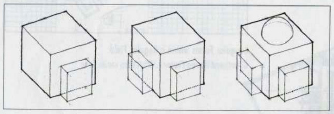
.jpg)
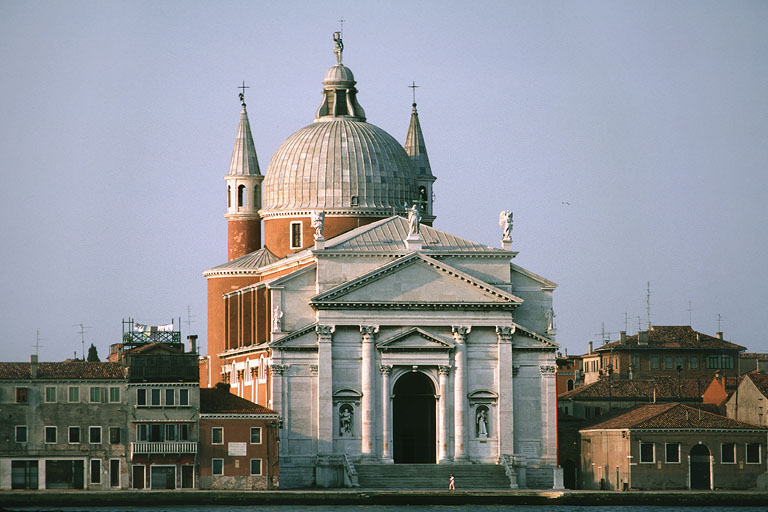
.jpg)

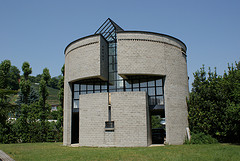
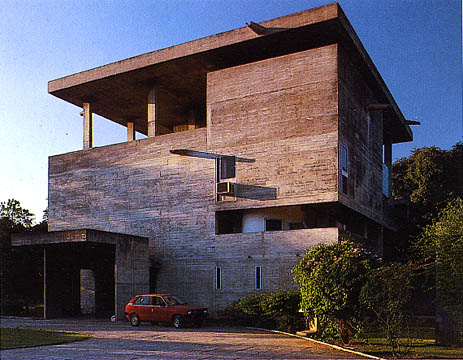
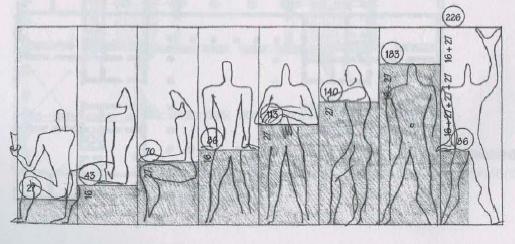
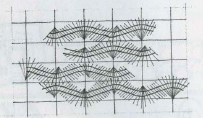
.jpg)
